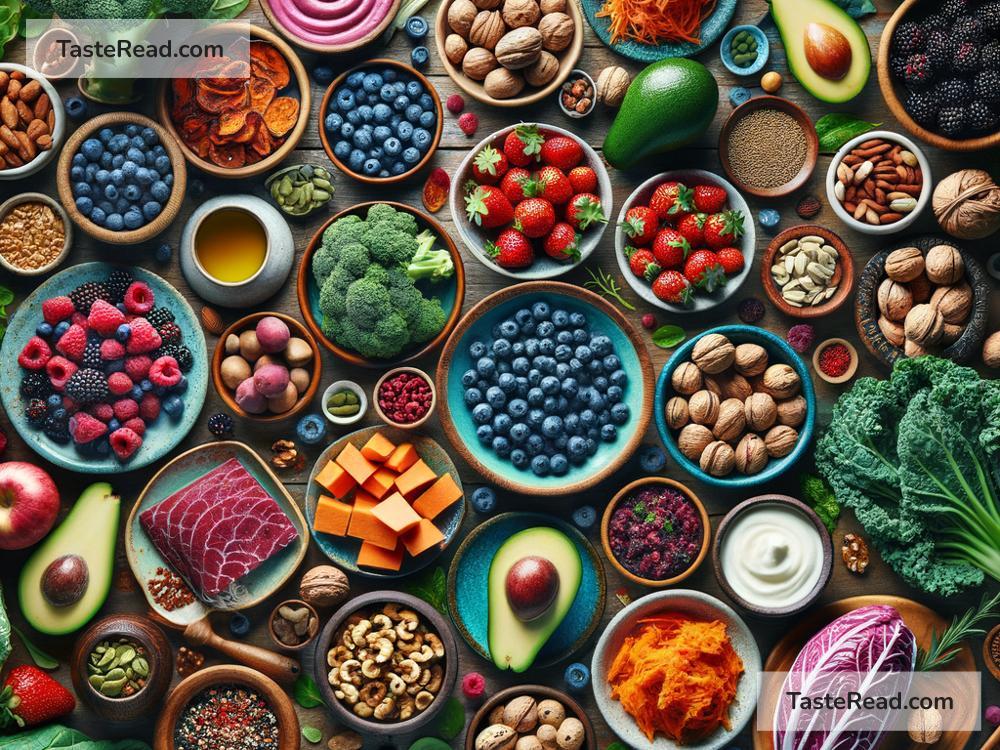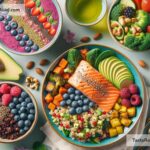Super Foods for Boosting Your Body’s Regenerative Powers
Our bodies are amazing. They work hard every day to repair, heal, and rebuild themselves. Whether it’s recovering from a scratch or fighting off illnesses, your body’s regenerative power plays a key role in staying healthy. While this natural ability is always at work, there are certain foods that can enhance your body’s regenerative capacity. The good news is, eating these nutrient-packed foods is simple and delicious. In this article, we’ll explore the best foods to help your body heal and stay strong.
What Does “Regeneration” Mean?
In simple terms, regeneration is your body’s way of repairing itself when cells or tissues are damaged. For example, when you scrape your knee, your body begins to repair the skin. Similarly, your organs, bones, and muscles regenerate to keep you in good shape. This process is influenced by many factors, including age, genetics, and lifestyle. While some of these factors can’t be controlled, your diet is a powerful way to improve your body’s ability to regenerate.
How Can Food Help Your Body Heal?
Food provides the essential nutrients your body needs to function properly. Some nutrients, like vitamins, minerals, antioxidants, and healthy fats, play a special role in repairing cells, reducing inflammation, and helping tissues grow stronger. By adding the right foods to your meals, you can support your body’s natural healing processes.
Top Foods to Enhance Regenerative Capacity
Here are some of the best foods to supercharge your body’s ability to repair and rejuvenate:
1. Leafy Greens
Leafy greens like spinach, kale, and Swiss chard are filled with vitamins and minerals such as vitamin K, vitamin C, and magnesium. These nutrients help support cell repair and strengthen bones. Plus, leafy greens are high in antioxidants, which fight damage caused by free radicals – unstable molecules that can harm cells.
How to include them: Add leafy greens to salads, smoothies, omelets, or soups.
2. Fatty Fish
Fatty fish like salmon, mackerel, and sardines are rich in omega-3 fatty acids. These healthy fats reduce inflammation, which is crucial for healing and regeneration. Omega-3s also support brain health and help maintain smooth, flexible skin.
How to include them: Grill, bake, or pan-fry fatty fish, or toss some canned salmon into pasta dishes or salads.
3. Berries
Strawberries, blueberries, raspberries, and blackberries are not only sweet and tasty, but they also pack a punch when it comes to antioxidants. These compounds protect your cells from damage while promoting the growth of new ones. Berries are also rich in vitamin C, which helps your skin heal faster.
How to include them: Snack on fresh berries, add them to yogurt or oatmeal, or blend them into smoothies.
4. Nuts and Seeds
Almonds, walnuts, chia seeds, and flaxseeds are excellent sources of healthy fats, protein, and vitamin E. Vitamin E is particularly important for skin repair and protecting cells from damage. Plus, nuts and seeds are filled with energy-boosting nutrients that promote recovery.
How to include them: Sprinkle nuts and seeds on salads, blend them into smoothies, or grab a handful as a snack.
5. Bone Broth
Bone broth, made by simmering animal bones with water and spices, is rich in collagen, gelatin, and amino acids. These nutrients can help repair tissues like skin, muscles, and joints. Bone broth is also gentle on your stomach, making it a great option when you’re recovering from illness.
How to include it: Sip a warm cup of bone broth, or use it as a base for soups, stews, and sauces.
6. Avocados
Avocados are packed with healthy fats, vitamins C and E, and potassium. The fatty acids in avocados play a role in reducing inflammation and promoting smooth, healthy skin. Potassium also supports muscle repair and recovery after physical activity.
How to include them: Mash avocado for guacamole, spread it on toast, or use it as a topping for salads.
7. Whole Grains
Whole grains like quinoa, brown rice, oats, and whole wheat are filled with fiber, B vitamins, and important minerals like zinc and magnesium. These nutrients help promote energy, tissue repair, and overall cellular health.
How to include them: Choose whole-grain bread, pasta, or cereal, and enjoy quinoa or brown rice as a side dish.
8. Citrus Fruits
Oranges, lemons, limes, and grapefruits are high in vitamin C, which plays a major role in collagen production. Collagen is what helps keep skin, bones, and connective tissues strong. Citrus fruits also contain water, which is essential for staying hydrated and supporting cell function.
How to include them: Drink fresh-squeezed orange juice, snack on citrus slices, or add lemon to your water.
9. Garlic
Garlic isn’t just a flavor booster – it’s a natural powerhouse for healing. It contains compounds like allicin that help fight infection and inflammation. Garlic also supports your immune system, giving your body the tools it needs to repair itself.
How to include it: Add crushed garlic to stir-fries, soups, and sauces, or roast it for a milder flavor.
Final Thoughts
Your body has incredible abilities to heal and repair itself, but the right foods can make all the difference. By eating a variety of nutrient-rich options like leafy greens, berries, fatty fish, and nuts, you’re providing your body with the tools it needs to regenerate efficiently. Remember, the real key is consistency. Make these healing foods part of your everyday diet and pair them with healthy habits like staying hydrated, exercising, and getting enough sleep.
Fuel your body with these super foods, and you’ll be amazed at how much better you feel, inside and out!


